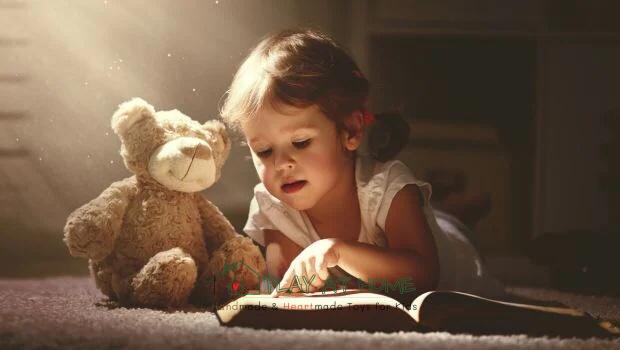Part 1: BENEFITS IN CHILDREN
For many children, stuffed animals are loyal and comforting companions. A soft, fluffy friend can make a trip to the doctor or sleeping in the dark less scary. For these children, stuffed animals act as transitional objects – objects that do not move [but] provide comfort, especially in unfamiliar or stressful situations [ for children] (Winnicott, 1953). Although considered children's toys, stuffed animals can also become transitional items for adults as well. They are both a source of reassurance and bring mental and physical benefits to child and adult owners.
Stuffed animals can help children develop and maintain sleeping habits. For example, in a study of students and their parents, Golem and colleagues (2019) used questionnaires and group discussions to clarify beliefs and attitudes. that participants had about sleep. Among the topics discussed, they found that stuffed animals were an important point in conversations between children. Specifically, these children described the physical and emotional comfort and support that stuffed animals provided them at bedtime (Golem et al., 2019).
Stuffed animals help with sleep, encourage reading, and comfort children in stressful or painful situations such as post-surgery.

Photo source: https://food.ndtv.com/health/teddy-bear-helps-your-infant-cultivate-reading-habits-1664816
In addition, stuffed animals can also help promote reading in children. In another study in preschool children, Okazaki et al. (2017) investigated the use of a stuffed animal sleepover program to encourage children to read. To do this, they first gave children stuffed animals that had been left in the library overnight. People take pictures of these stuffed animals doing different activities to convince children that they are magical and sentient. The stuffed animals will then leave a message for the child, asking them to read the book to them. During the study, Okazaki and his colleagues also observed these children and recorded the number of children reading picture books to stuffed animals during free play time before and after participating in the program. They found that the number of children reading books to stuffed animals increased after the sleepover with stuffed animals program. Although this effect disappeared after 3 days, Okazaki and colleagues (2017) found that repeating this program to children after a month by asking them to describe the activities of stuffed animals when they sleep over at their house helps. Promote reading tendency in children.
Finally, stuffed animals can help prevent pain in children after surgery. In a study of pediatric patients aged 1-7 years undergoing surgery, Ullán and colleagues (2014) gave children a stuffed bunny dressed in doctor's clothing and instructed the patient's parents how to play. with your child with a stuffed animal after the child has surgery. The team also measured the children's pain level based on their expressions in the postoperative period, such as facial expressions or crying. Overall, Ullán and colleagues (2014) found that children who received stuffed rabbits and played with them as instructed experienced less pain than other children. Researchers posit two possible explanations for this: either playing with stuffed animals distracts children from the pain; or it makes the child happier, which in turn affects the child's experience of pain.
SOURCE: https://icjs.us/the-positives-of-plushies-stuffed-animals-have-benefits-for-children-and-adults/
PLAYATHOME abridged translation



1 comment
[…] […]